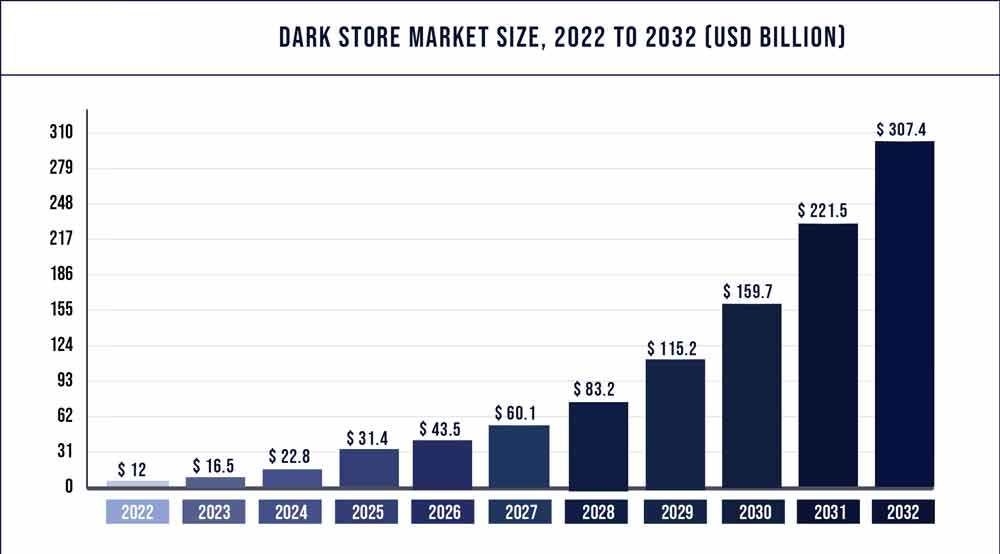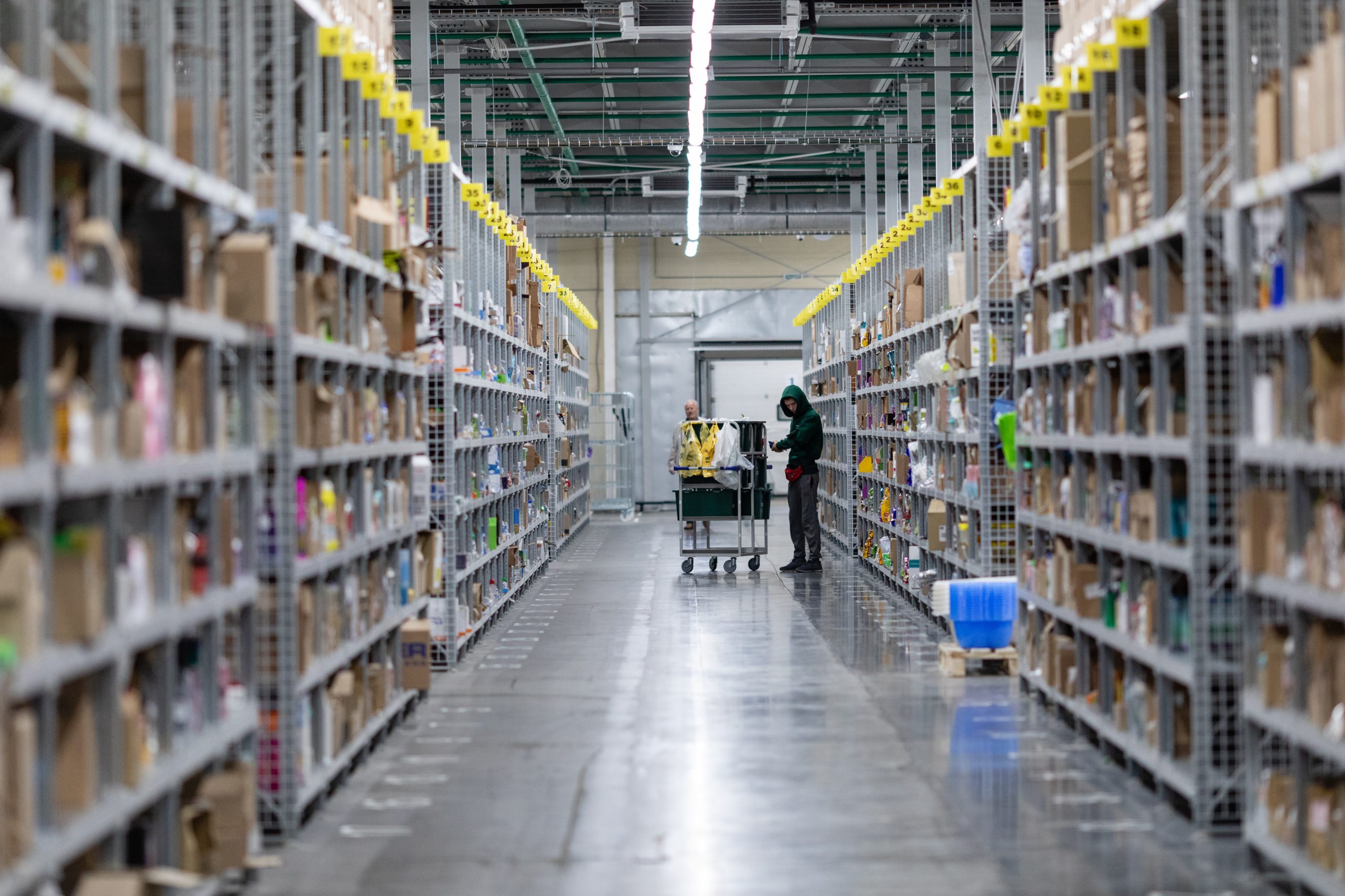Welcome to the intriguing world of Dark Stores—the hidden gems revolutionizing retail and e-commerce businesses! Step into the shadows where these mysterious warehouses lurk, poised to change the game in online shopping. Join us as we unveil the secrets behind how Dark Stores operate and explore why they are becoming a crucial strategy for retailers looking to stay ahead in an ever-evolving market. Let’s shine a light on this innovative concept and discover its benefits, challenges, and future for these enigmatic entities.
The Rise of Dark Stores in the Retail Industry
The retail industry has seen a significant shift in recent years with the rise of dark stores. These fulfillment centers operate more like warehouses than traditional storefronts, catering to online orders rather than walk-in customers. Dark stores have become increasingly popular due to the growing demand for fast and efficient delivery services in e-commerce.
Retailers leverage dark stores to streamline operations and offer quicker order turnaround times. Businesses can optimize their processes and significantly reduce delivery lead times by dedicating these spaces solely to fulfilling online orders. This model allows retailers to meet consumer expectations for same-day or next-day deliveries efficiently.
With the rise of e-commerce giants like Amazon setting high standards for speedy deliveries, traditional retailers are turning to dark stores as a competitive solution. These facilities enable companies to compete effectively in the ever-evolving digital marketplace by enhancing their logistics capabilities and customer satisfaction.
Dark stores represent a new chapter in the retail industry’s evolution. They combine technology-driven solutions with operational efficiency to meet modern consumers’ needs.
The Benefits of Dark Stores for E-commerce Businesses
The benefits of dark stores for e-commerce businesses are plentiful. One significant advantage is the ability to fulfill orders quickly and efficiently, thanks to their centralized locations optimized for speedy deliveries. This results in improved customer satisfaction as shoppers receive their purchases promptly.
Dark stores also enable businesses to manage inventory levels better and reduce out-of-stock situations by having dedicated storage space solely for online orders. This helps prevent lost sales due to unavailable items when customers are ready to buy.
Moreover, operating dark stores can lead to cost savings for e-commerce companies by streamlining operations and minimizing overhead expenses associated with traditional brick-and-mortar retail locations. With lower operational costs, businesses can offer competitive pricing and promotions to attract customers.
In addition, dark stores allow brands to enhance their omnichannel strategies by offering click-and-collect services or same-day delivery options. This seamless shopping experience across online and offline channels can drive customer loyalty and repeat business.
How Dark Stores Operate: A Step-by-Step Guide
Have you ever wondered how dark stores operate behind the scenes to fulfill online orders seamlessly? Here’s a step-by-step guide to how these fulfillment centers work their magic.
Upon receiving an order through the e-commerce platform, the store staff pick and pack items from shelves dedicated solely to online orders. This ensures efficiency and prevents any mix-ups with in-store inventory.
Next, specialized technology guides employees on the most efficient routes within the dark store to gather all items for each order accurately and swiftly. This streamlined process minimizes errors and maximizes speed.
Once all items are gathered, they are carefully packed, following specific packaging guidelines to ensure safe delivery to customers. Each package is labeled correctly for shipping carriers based on delivery preferences selected by customers during checkout.
Packages are picked up by designated carriers and distributed to customers’ doorsteps, efficiently completing the last mile of delivery. And just like that, another successful order has been fulfilled thanks to the seamless operations of a dark store!
Challenges and Limitations of Dark Stores
Despite their many advantages, dark stores also come with challenges and limitations that businesses must consider. One significant challenge is the initial investment to set up a dark store operation. The costs can be substantial, from retrofitting the space to implementing technology systems.
Another area for improvement is related to inventory management. Dark stores typically have smaller storage spaces than traditional retail locations, which can lead to stock availability and fulfillment efficiency issues. Additionally, managing last-mile delivery logistics in urban areas where dark stores are often located can be complex and costly.
Furthermore, maintaining a seamless customer experience in a dark store setting poses its own set of challenges. Accurate order picking and personalized service become more difficult without face-to-face interactions. Regulatory compliance and zoning restrictions for operating dark stores may vary by region, adding another layer of complexity for businesses.
Navigating these obstacles requires careful planning and strategic decision-making by retailers seeking to leverage the benefits of dark store operations effectively.
Future of Dark Stores in the Retail Market
As the retail landscape continues to evolve, dark stores are poised to play a significant role in shaping the future of e-commerce. With consumer preferences shifting towards online shopping and fast delivery options, dark stores offer a solution that combines efficiency and convenience.
In the coming years, we can expect to see an increase in the number of dark stores established by retail giants and smaller businesses. This expansion will cater to the growing demand for speedy deliveries and enable retailers to optimize their inventory management processes.
Moreover, technological advancements, such as automation and robotics, will further streamline operations within dark stores, making them even more efficient and cost-effective. These innovations will enhance order fulfillment speed while reducing operational costs for businesses.
The future of dark stores looks promising as they continue to revolutionize how retailers meet customer expectations in an increasingly digital world.

Dark-Store-Market-Size
The concept of Dark-Store-Market-Size has emerged as a pivotal element in the evolving landscape of e-commerce and logistics, reflecting a significant shift in consumer behavior and retail strategies. As urban areas become increasingly congested, retailers are exploring innovative solutions to meet the growing demand for rapid delivery services. The Dark Store Market Size highlights this transformation, where conventional brick-and-mortar stores adapt to fulfill online orders more efficiently by operating as hidden warehouses.
These dark stores are strategically located within city confines to optimize last-mile delivery times while minimizing operational costs. The burgeoning Dark-Store-Market-Size indicates increased investment and infrastructure dedicated to these facilities and underscores a broader trend toward integrating technology with traditional retail paradigms. With businesses keenly analyzing data on customer preferences and buying habits, it’s evident that understanding the dynamics of the Dark Store Market Size will play a crucial role in shaping future retail landscapes and enhancing customer satisfaction through swift fulfillment services.
Conclusion: Is a Dark Store Strategy Right for Your Business?
Consider your operations’ unique characteristics and needs when evaluating whether a dark store strategy suits your business. Reflect on the benefits that dark stores can offer, such as improved efficiency, faster order fulfillment, and enhanced customer experience. Take into account challenges like high initial investment costs and potential limitations in scaling up.
A well-thought-out decision should be based on thorough market research and analysis to determine if implementing a dark store model aligns with your business goals and objectives. While it may only be suitable for some retailers or e-commerce businesses, the rise of dark stores in the retail industry indicates its growing importance and relevance in meeting consumer demands.
As you weigh the pros and cons, remember that embracing innovation is vital to staying competitive in today’s rapidly evolving retail landscape. Whether you adopt a dark store strategy or explore other alternatives, always prioritize delivering exceptional value to your customers while optimizing operational efficiency for long-term success in an increasingly digital world.








